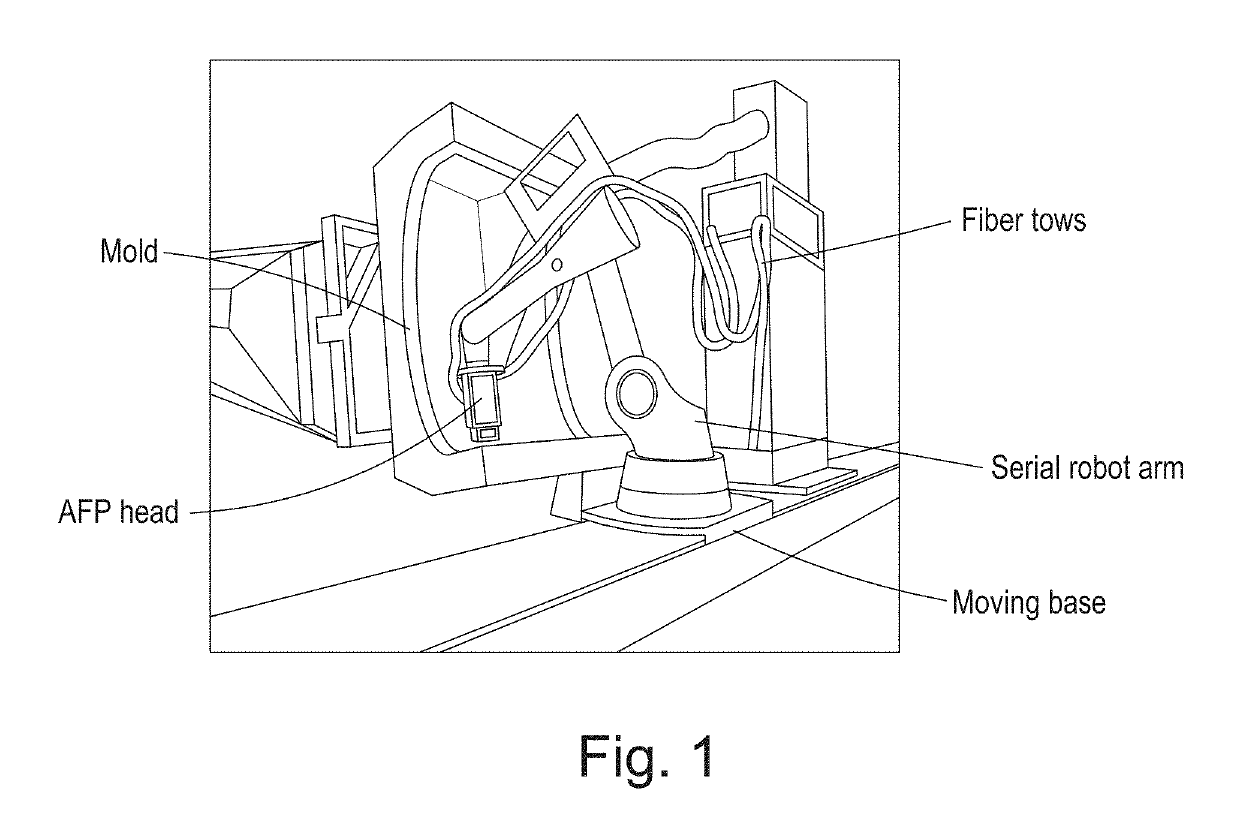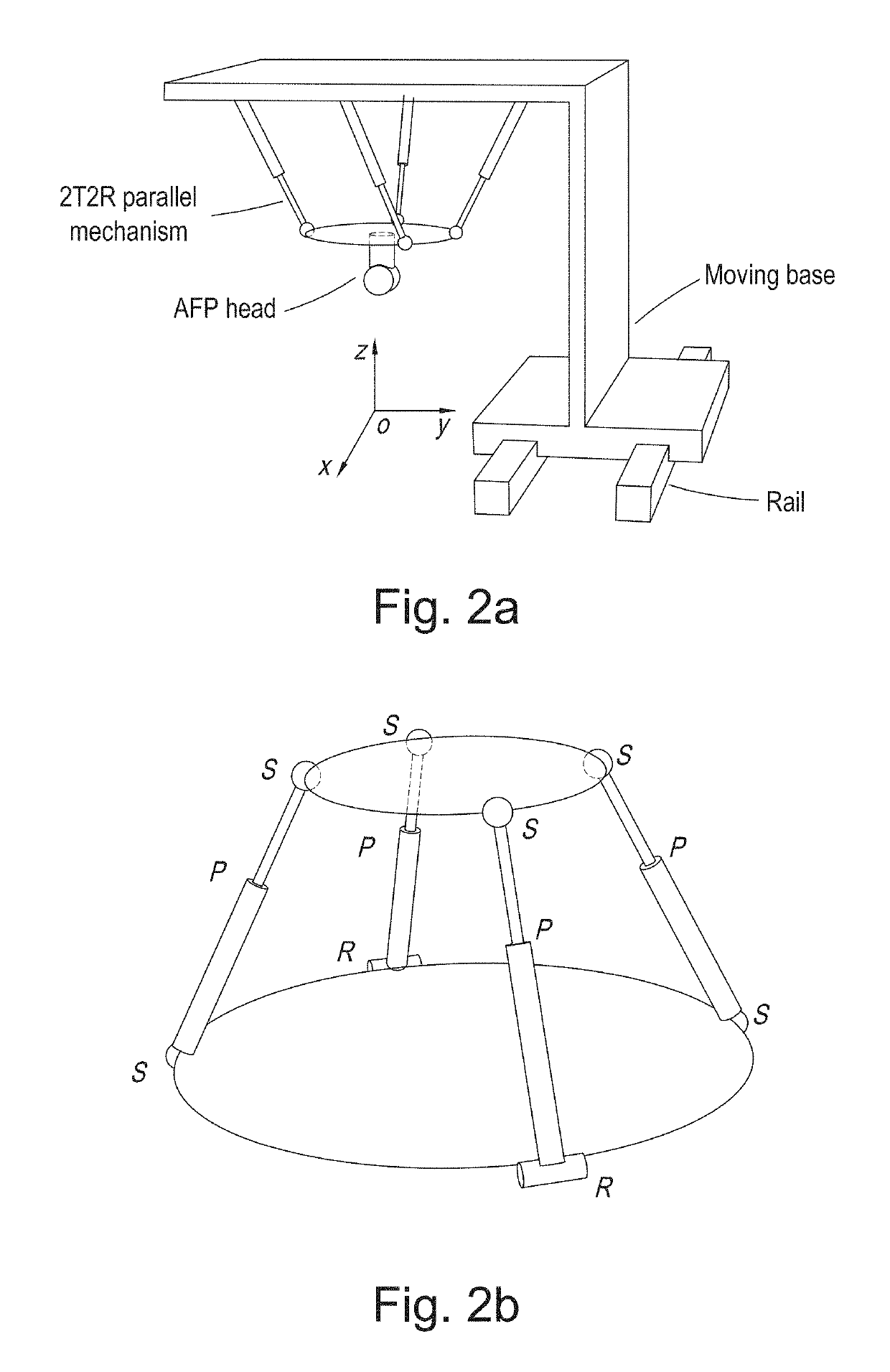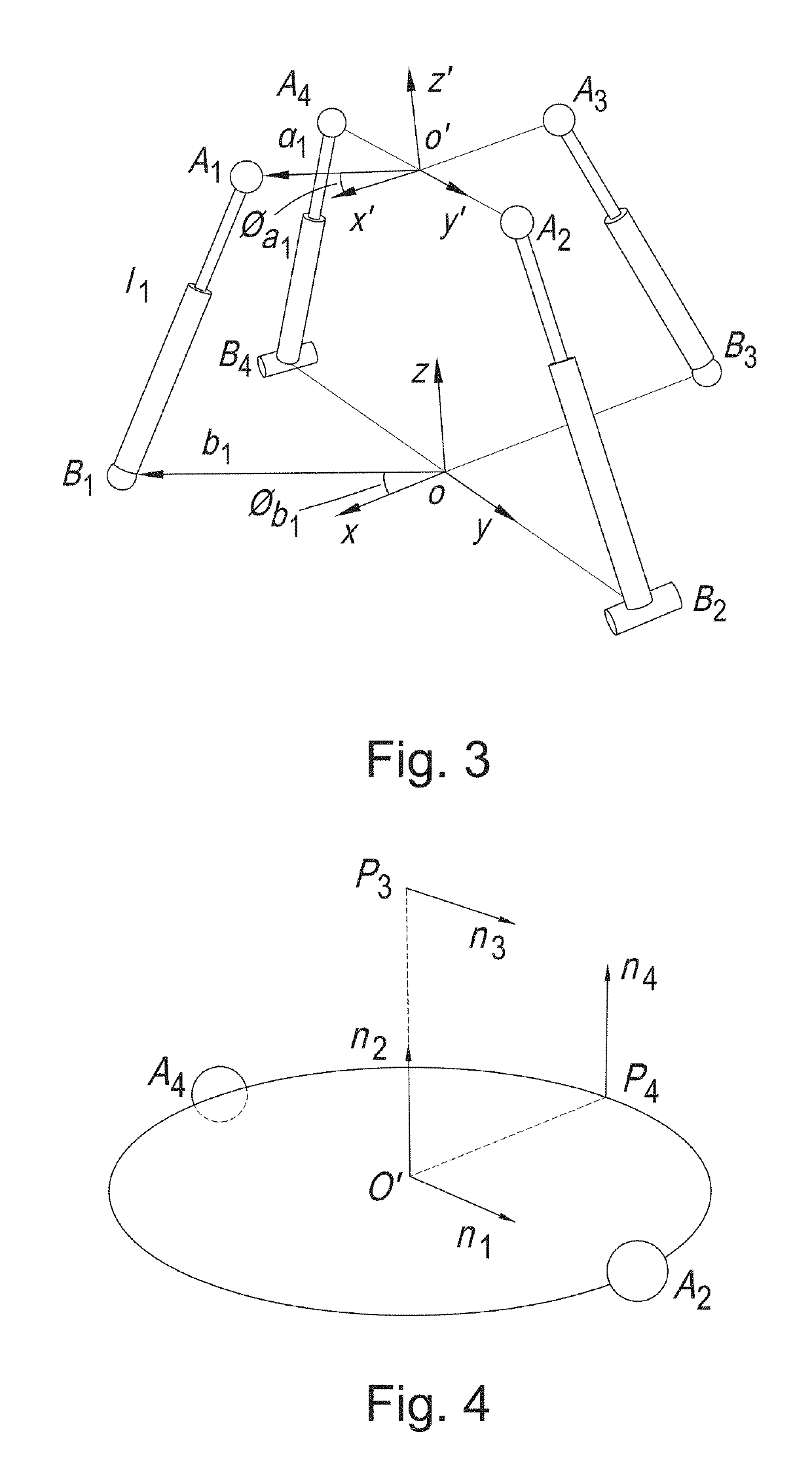Parallel mechanism based automated fiber placement system
a technology of automatic fiber placement and parallel mechanism, which is applied in the direction of manipulators, joints, program-controlled manipulators, etc., can solve the problems of serial robots generally having low stiffness, large inertia, affecting force and precision performance, etc., and achieve good kinematics performance
- Summary
- Abstract
- Description
- Claims
- Application Information
AI Technical Summary
Benefits of technology
Problems solved by technology
Method used
Image
Examples
Embodiment Construction
[0044]2. A 2T2R Parallel Mechanism Based AFP System
[0045]In AFP systems, fiber tows are guided by a fiber-processing head attached to the end-effector of a robot and carefully placed following a pre-defined robot trajectory as in FIG. 1. To tack the tows on the mold, they are heated and compacted at the same time when the robot is moving. Since the ratio of the mass of payload over the mass of the robot is typically small for 6DOF serial robots, like the KUKA robot in FIG. 1, the ratio is about 210 kg / 1150 kg=0.18, the ratio can be larger than 10 for parallel robots. In this case, for the same payload of 210 kg, a 21 kg parallel robot might be enough to support it. Following this, the advantage is obvious considering the space occupation and system cost. Although parallel robots suffers from the smaller workspace than serial ones, a moving base is generally used to enlarge the workspace and it is also common for the serial robots in the industry, like the one in FIG. 1.
[0046]Conside...
PUM
| Property | Measurement | Unit |
|---|---|---|
| weight | aaaaa | aaaaa |
| flexibility | aaaaa | aaaaa |
| stiffness | aaaaa | aaaaa |
Abstract
Description
Claims
Application Information
 Login to View More
Login to View More - R&D
- Intellectual Property
- Life Sciences
- Materials
- Tech Scout
- Unparalleled Data Quality
- Higher Quality Content
- 60% Fewer Hallucinations
Browse by: Latest US Patents, China's latest patents, Technical Efficacy Thesaurus, Application Domain, Technology Topic, Popular Technical Reports.
© 2025 PatSnap. All rights reserved.Legal|Privacy policy|Modern Slavery Act Transparency Statement|Sitemap|About US| Contact US: help@patsnap.com



